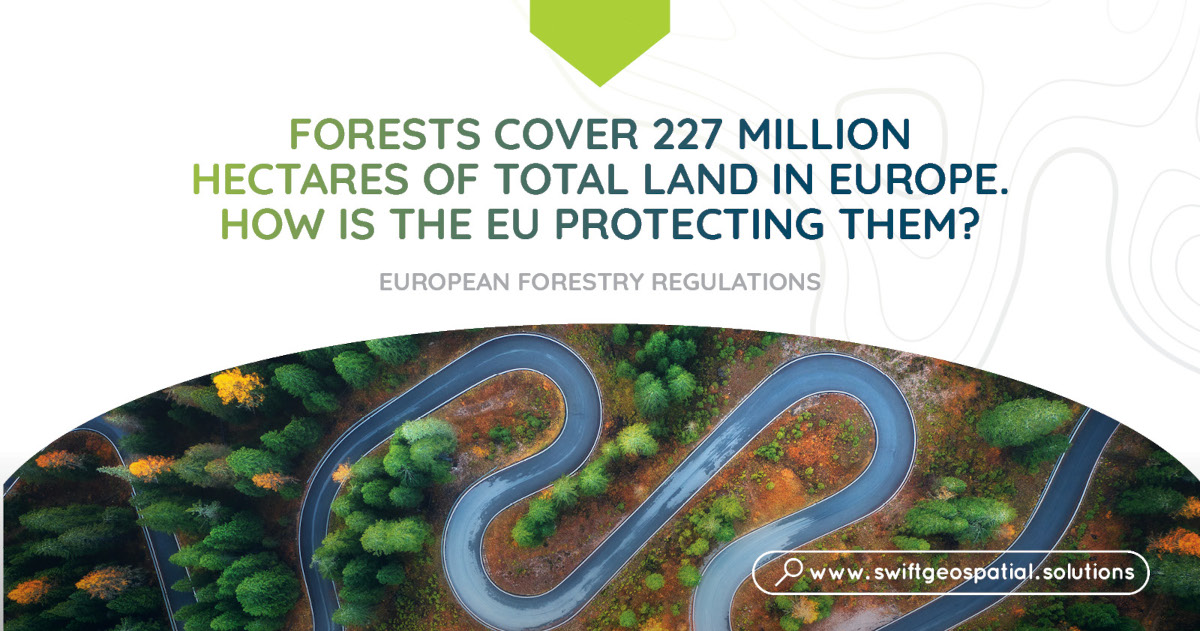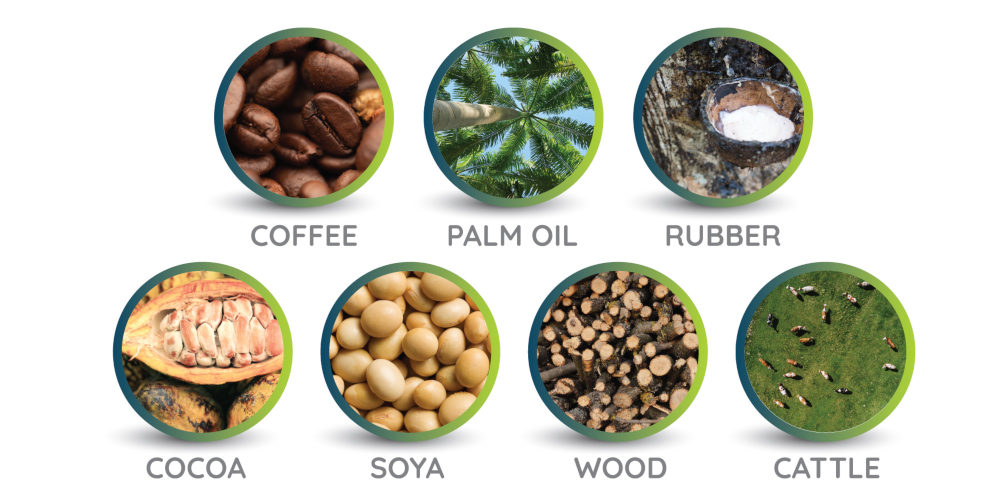European Forestry Regulations – The Journey To A Climate-Neutral EU by 2050
According to Forest Europe, forests cover 227 million hectares or 35% of total land in Europe. Other wooded land accounts for an additional 27 million hectares. The importance of protecting these forests cannot be understated. Not only do forests help in fighting climate change as a critical carbon sink – absorbing around 10% of total EU emissions – but they are also a source of biodiversity, on top of aiding in the prevention of soil erosion and other natural disasters.
Ensuring the preservation of these forests and mitigating deforestation globally are top priorities as the EU strives to become climate neutral by the year 2050.

On home soil, the EU has implemented the European Green Deal, which forms part of the EU biodiversity strategy for 2030. This strategy takes a holistic approach to building societal resilience to future threats such as the impact of climate change, forest fires, and food insecurity to name a few. The European Green Deal is a key component of this strategy and is supported by three key guidelines:
- Guidelines on Biodiversity-Friendly Afforestation, Reforestation and Tree Planting. These guidelines outline practical recommendations to support authorities, forest and landowners, and managers and civil society to better implement biodiversity-friendly afforestation, reforestation and tree-planting projects including at the local level. Find out more here.
- Guidelines for Defining, Mapping, Monitoring and Strictly Protecting EU Primary and Old-Growth Forests. These guidelinesprovide practical guidance to national policy- and decision-makers that will allow them to effectively identify and protect remaining primary and old-growth forests in the EU. Find out more here.
- Food to Fork Strategy. Food systems consume large amounts of natural resources and result in biodiversity loss among other issues. This Strategy aims to accelerate the transition to a sustainable food system that should have a neutral or positive environmental impact, help to mitigate climate change, reverse the loss of biodiversity, and promote fair trade among other benefits. Find out more here.

Globally the EU is determined to ensure that only deforestation-free products enter its borders through a new regulation. This regulation – called the regulation on deforestation-free products – ensures commodity traders on the EU markets and exports do not originate from “recently deforested land or have contributed to forest degradation”. According to the WWF, the EU is responsible for 16% of tropical deforestation linked to international trade, second only to China. This regulation is a leap in the right direction in putting pressure on global suppliers with the expectation of reducing greenhouse gas emissions and biodiversity loss.
In conjunction with preventing the purchase, use and consumption of products contributing to deforestation and forest degradation in both the EU and globally, these regulations also seek to target deforestation driven by the agricultural expansion needed to produce certain commodities. These commodities are palm oil, cattle, timber, coffee, cocoa, rubber and soy. Derived products that are also included in the regulations are chocolate, furniture, printed paper, and certain palm-oil-based products. The above are considered the main agricultural drivers of deforestation by the EU.

According to the Council of the European Union, these regulations create a benchmark system for countries within and outside the EU and assign a level of risk related to deforestation and forest degradation – either low, standard, or high. This risk rating then determines the level of specific obligation for operators and member state authorities to carry out inspections and implement controls. Traders will have to prove that products were produced deforestation-free and meet certain geolocation and traceability requirements.
As of 29 June 2023, operators and traders will have 18 months to implement the new European Forestry Regulations with timing concessions for smaller operators.
This new regulation forms part of the Forest, Law, Enforcement, Governance and Trade (FLEGT) Action Plan of 2003 which outlines measures available to the EU and its member states in tackling illegal logging in the world’s forests. This regulation also repeals the EU Timber Regulation, improving on the framework it put in place to counter the trade of illegally harvested timber and timber products.

Are you able to verify that your product is deforestation free?
Sustainable forest management is crucial in preserving both the biodiversity and productivity potential of forests. Regulations such as those spearheaded by the EU are driving real change on the journey to greater environmental and economic sustainability. Having said this, this regulation is not without its share of criticisms – from its complexity to how feasible implementation is universally, through to the regulations’ exclusion of wetlands, other wooded lands, and broader ecosystems. These will only be assessed for inclusion in one to two years according to environmental science and conservation news non-profit Mongabay.
Despite these criticisms, the progress made by the EU in charting a course towards climate neutrality and in prioritising the preservation of both global and homegrown forests is moving us in the right direction as we all battle on the front lines of conservation. The European Green Deal and the regulation on deforestation-free products are powerful tools to have as part of our environmental arsenal.

Coffee, cacoa, soy, palm oil, rubber, wood and cattle and various derived products are all on the EU monitoring radar.
Forestry monitoring management, also known as precision forestry, is crucial in preserving both the biodiversity and productivity potential of forests across the globe. The European Forestry Regulations are going to provide accountability and hopefully effect real change on the journey to greater ecological and economic sustainability.
Swift Geospatial offers a wide range of forestry monitoring services, allowing corporates involved in the farming of cocoa, palm oil, wood, soya and coffee, supplying the EU market full transparency regarding their operations.
As a business faced with these new regulations, where should you start?
Begin with your supply chain. Corporations are required to know their supply chains through and through – who the different stake holders are and what is happening at every stage – this enables you the ability to identify potential risks and challenges, such as supplier compliance or environmental impact.
Ensure your suppliers are committed to the same standards as your business
Inquire about your suppliers’ deforestation policies, procedures, and their methods of monitoring risks within their supply chain. By establishing this dialogue and connecting the various components of your supply chain, while consolidating reliable data, you can obtain valuable insights into your operational processes and associated risks. This approach enables you to ensure compliance with regulations, identify areas where value is generated, and pinpoint potential vulnerabilities where value could be compromised or lost.
Providing historical and up to date monitoring information on farming locations and forest location is a service we are able to offer companies across the globe.

